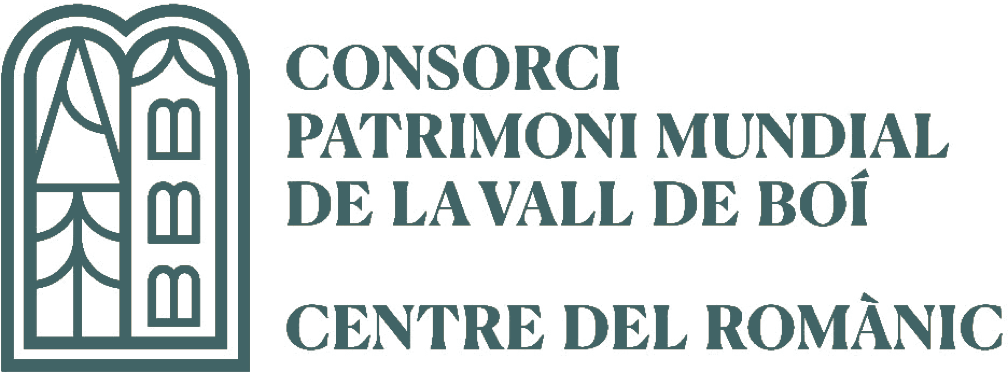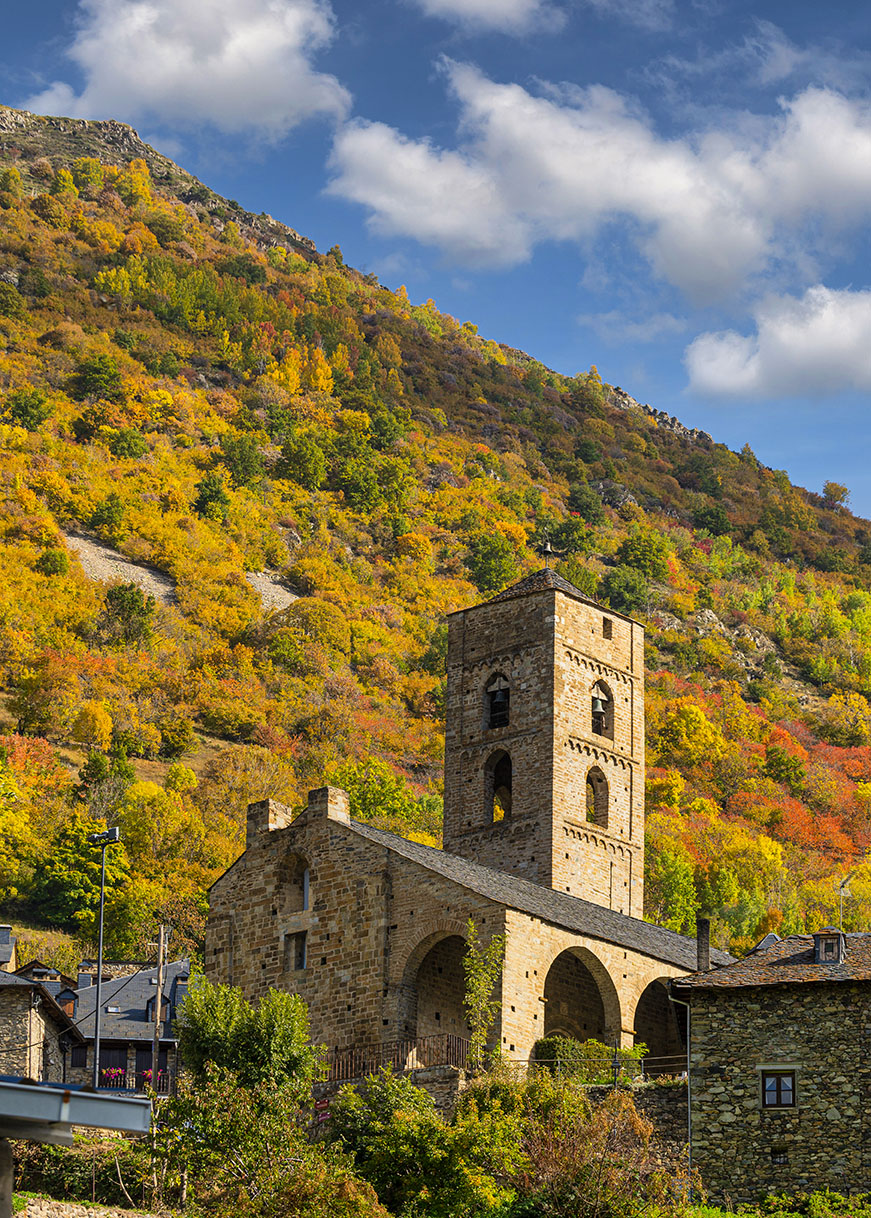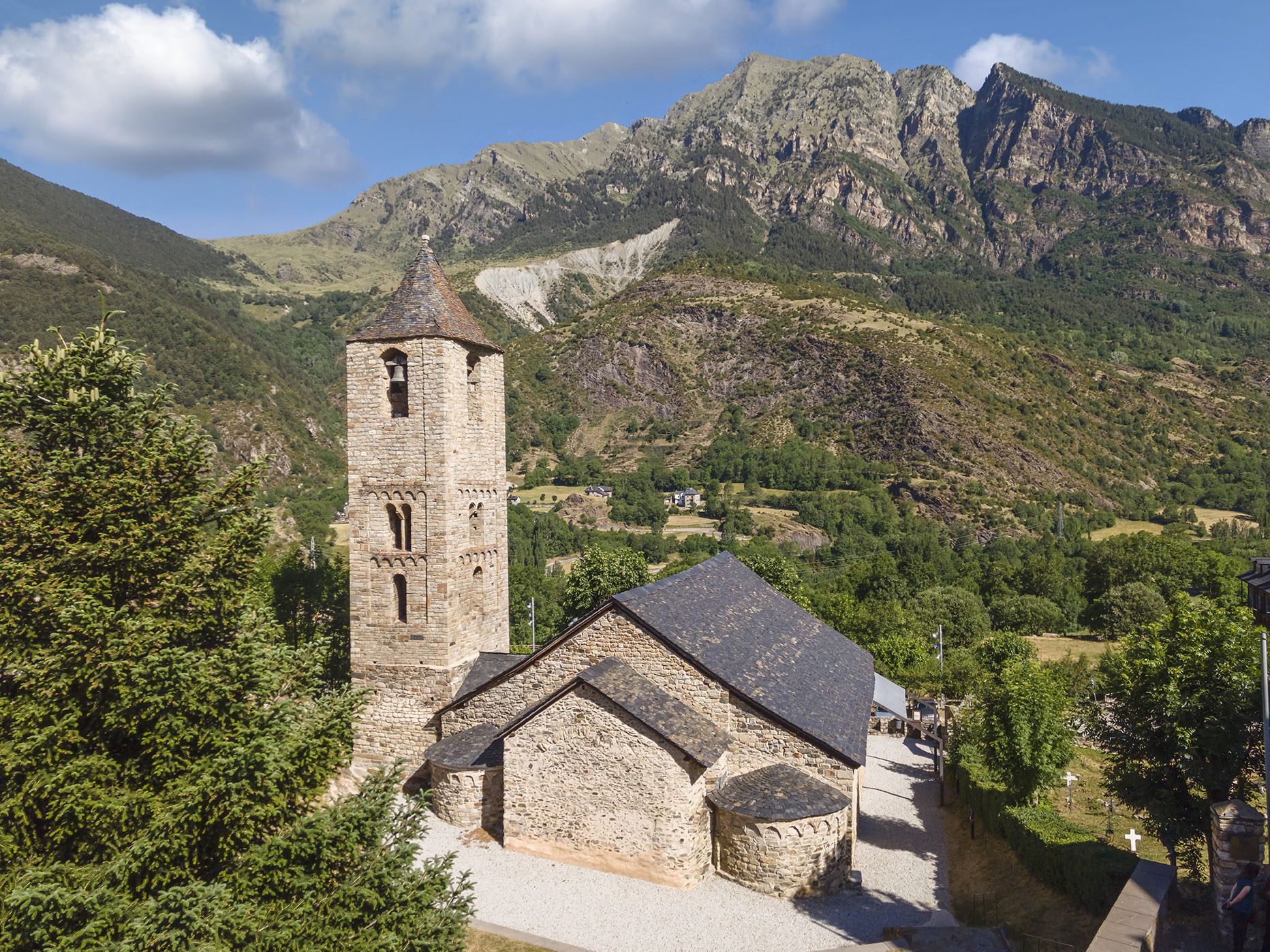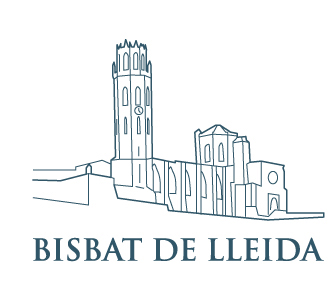The monumental nature of the Church of La Nativitat testifies to the importance of the town of Durro in the Middle Ages. The large size of the nave, the bell tower, the sculpted façade and the porch are outstanding.
The Romanesque church was remodelled on several occasions between the 16th and 18th centuries. These transformations added new spaces to the church, such as the two Gothic chapels and the Baroque sacristy.
The Romanesque image of Nicodemus, which originally formed part of an ensemble of the Descent from the Cross, is on display at the church.































